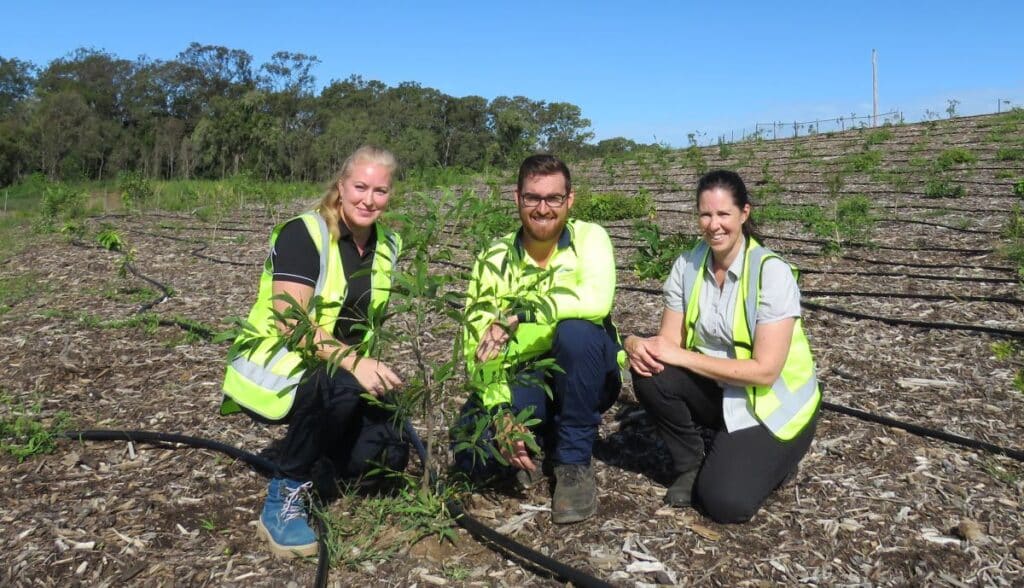
Since stage one of the phytocap trials at the Qunaba Waste Facility began in 2020 the site has undergone significant changes and shown promising results.
Phytocapping is a pioneering technology that uses scientific modelling to select a combination of native plants and soils which act as an efficient bio-pump system.
This controls the amount of rainfall that’s able to access the compacted waste, reducing the percolation of water and mitigating any potential release of leachate to the environment.
Preparation work for stage two commenced at the end of 2023 and has involved design adoption, earthmoving works and the spread of mulch to mirror the conditions of the stage one area.
Bundaberg Regional Council’s Senior Environmental Technical Officer Monika Osborne said native trees and shrubs raised in an onsite nursery were planted in the designated stage two area.
“Stage two covers around 2.6 hectares with 2,800 trees and shrubs already planted including 254 quite rare native Clausena smyrelliana commonly known as Greg’s wampi,” she said.
“These are particular to the Qunaba area and had to be propagated from seeds.
“The weather conditions in the last few months were very good for our young plants as we have observed great survival and growth rates since planting began in February.
“Another 400 more will be planted in coming months.”
Trial results so far are positive with environmental benefits and long-term cost-effectiveness which is making phytocapping an intriguing alternative for landfill remediation.
“We’ve already observed some positive effects on landfill gas where drone-based fugitive gas monitoring has indicated very low levels of methane gas,” Monika said.
“As the plants grow bigger, the area will have a better visual appeal and look like a continuation of the adjacent nature reserve rather than a bare landfill hill.
“This also creates natural habitats for local fauna.”
Monika said she was grateful for the assistance from others in her team and Council Horticulturist Caleb Bird who, with staff from the Parks, Sport & Natural areas team, shared their expertise in plant identification, design and raising native plant species.
“I’m also grateful for the assistance offered by One Million Trees Project Officer Carmen Bracken who shared her experience in managing a team for large-scale planting,” she said.
So far, the Qunaba phytocap project has contributed 2,570 trees to the One Million Trees tally which are native to the Bundaberg Region.
“The environmental benefits we’ve seen at the Qunaba Waste Facility has contributed to the aims we’re working towards achieving through the One Million Trees project,” Carmen said.
“We’re able to support the community, including local businesses, with planning their planting projects, assist with the selection of suitable species for their site and provide advice on protection such as tree guards and mulch.
“Large-scale planting can be daunting but being prepared with good planning and follow-up with timely watering and maintenance of the plants is the key to success.”
Property owners with landholdings within the Bundaberg Regional Council area can apply for up to 250 free native trees and shrubs to plant on their private land.
Trees can be planted for shelterbelts, wind breaks, and gardens, as well as riparian revegetation and remnant vegetation restoration projects.
To apply, head to the One Million Trees Landowner Program at ourbundabergregion.com.au.
Other news: Drinking fountains mapped in move to plastic free





i can still remember when the Woongarra Garbo Contractor nearly lost the truck in “the pit” where anything went in. Plenty of nutrient down under.